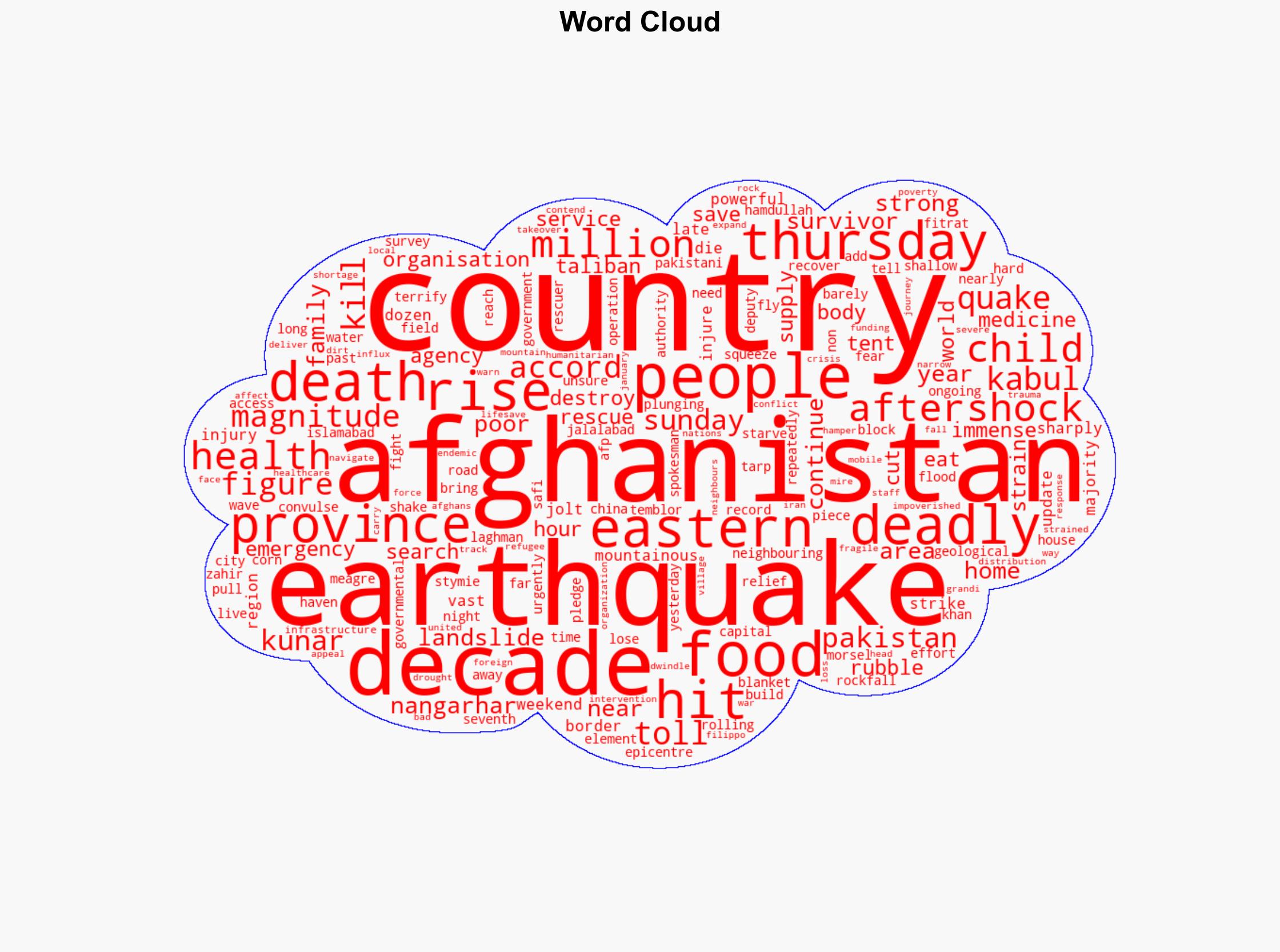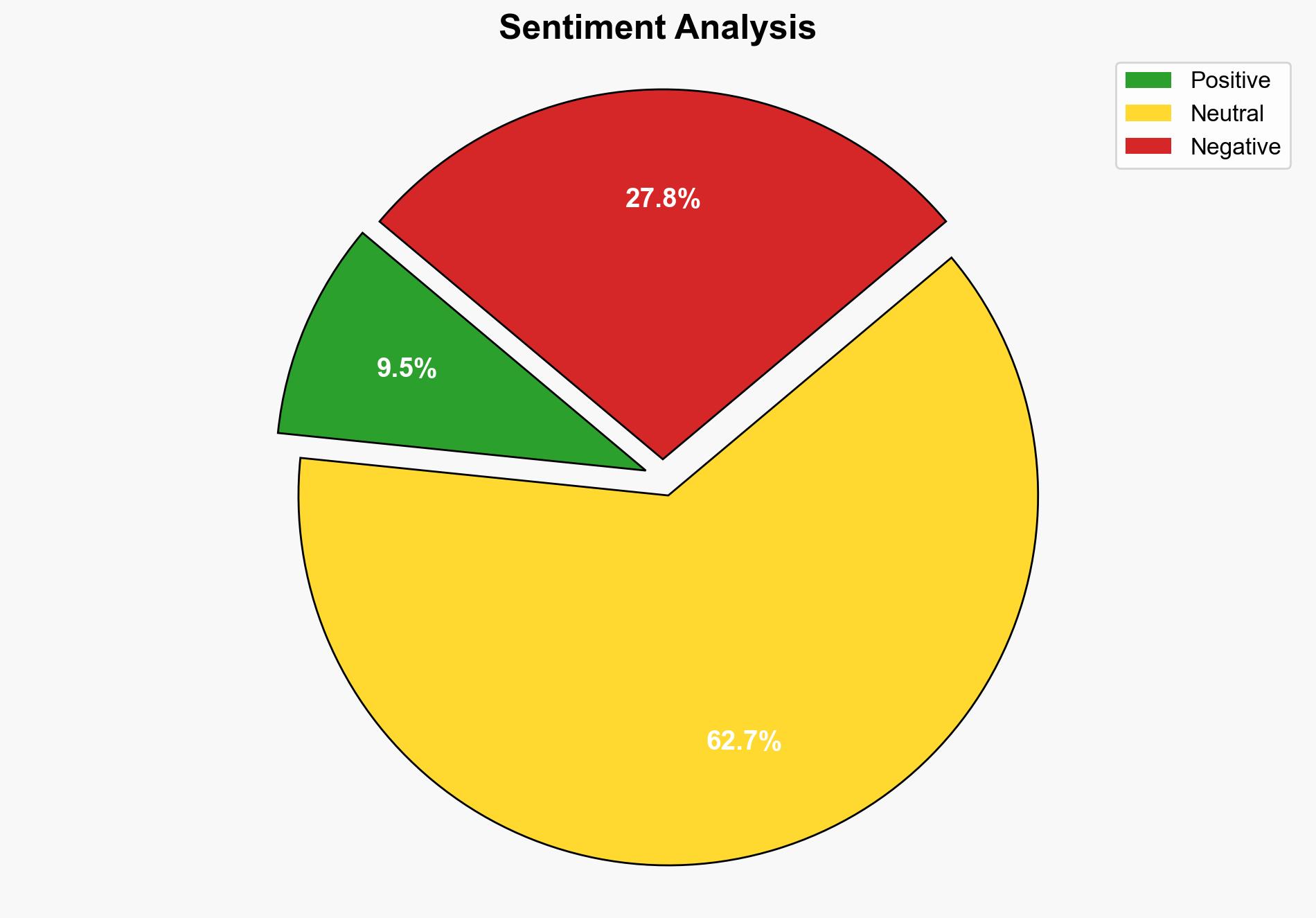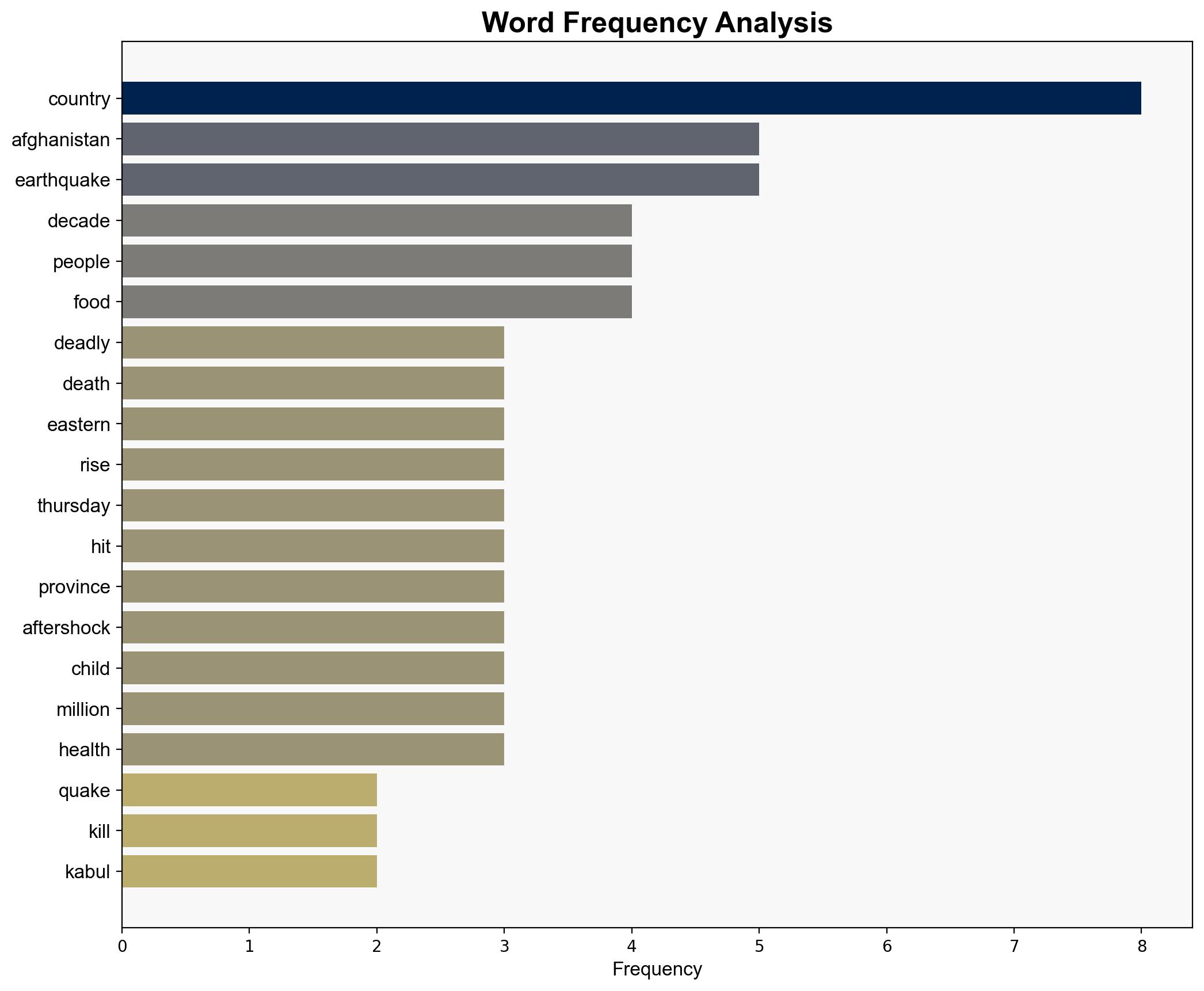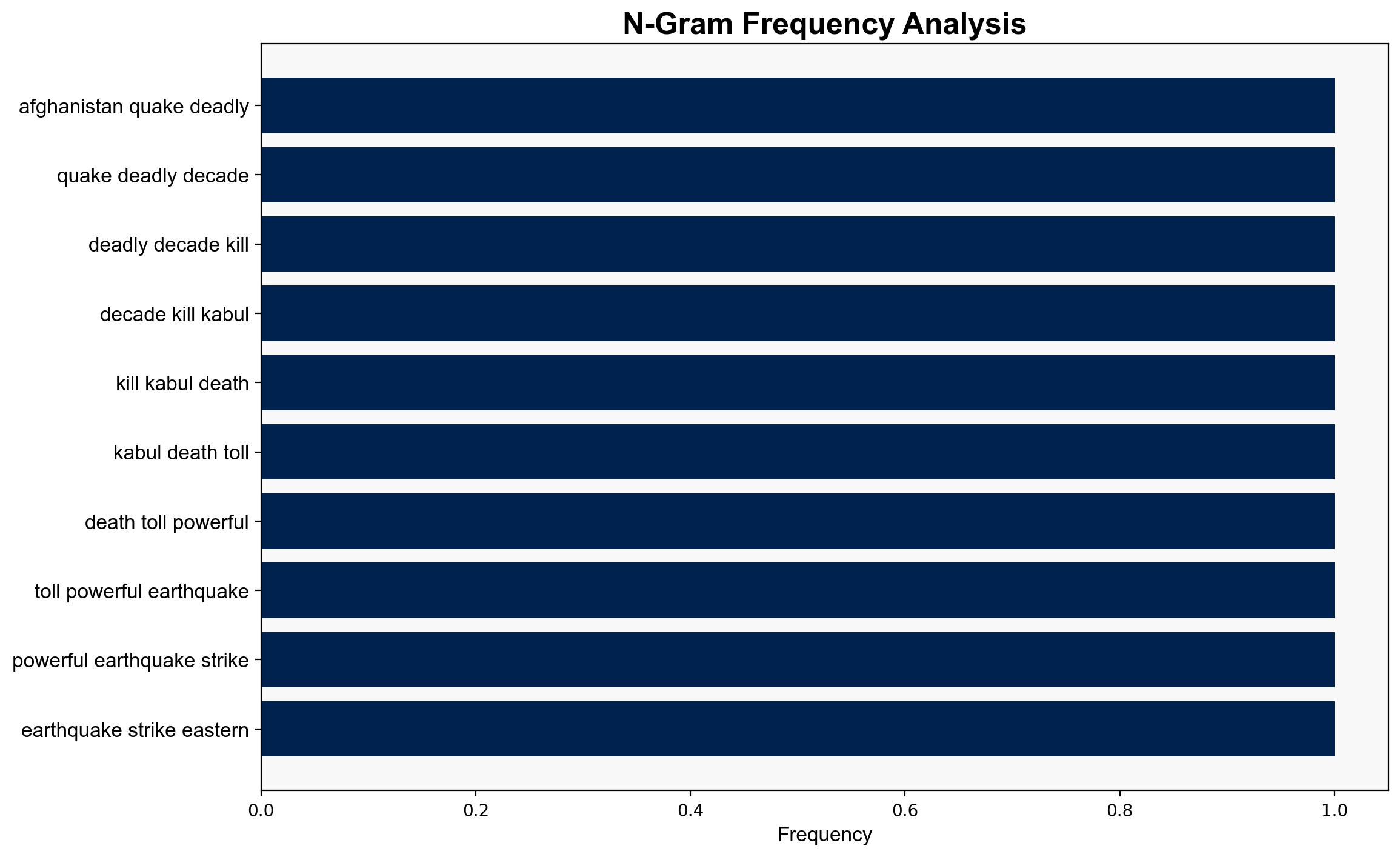Afghanistan quake deadliest in decades killing over 2200 – Hurriyet Daily News
Published on: 2025-09-05
Intelligence Report: Afghanistan quake deadliest in decades killing over 2200 – Hurriyet Daily News
1. BLUF (Bottom Line Up Front)
The most supported hypothesis is that the earthquake’s impact is exacerbated by Afghanistan’s fragile infrastructure and ongoing humanitarian crisis, leading to a prolonged and severe humanitarian emergency. Confidence level: High. Recommended action includes international coordination for immediate humanitarian aid and long-term infrastructure support.
2. Competing Hypotheses
Hypothesis 1: The earthquake’s high death toll and destruction are primarily due to the natural disaster’s magnitude and the region’s geological vulnerability. This hypothesis is supported by the reported magnitude and frequency of aftershocks, which are typical of seismic activity in this region.
Hypothesis 2: The humanitarian impact is significantly worsened by Afghanistan’s existing socio-political instability, poor infrastructure, and inadequate emergency response capabilities. This hypothesis is supported by the ongoing challenges in accessing affected areas, the strain on local healthcare services, and the lack of adequate resources for immediate relief efforts.
3. Key Assumptions and Red Flags
– Assumption: The reported death toll and destruction levels are accurate and not underestimated due to communication breakdowns or political motives.
– Red Flag: Potential underreporting or delayed reporting due to the Taliban’s control over information dissemination.
– Assumption: International aid pledges will translate into timely and effective relief efforts.
4. Implications and Strategic Risks
The earthquake exacerbates Afghanistan’s humanitarian crisis, potentially increasing regional instability. The strain on resources may lead to increased migration pressures on neighboring countries, particularly Pakistan and Iran. There is also a risk of further destabilization if aid is not effectively coordinated, potentially leading to increased influence of non-state actors exploiting the crisis.
5. Recommendations and Outlook
- Immediate international coordination to deliver humanitarian aid, focusing on shelter, food, and medical supplies.
- Long-term infrastructure development plans to improve resilience against future natural disasters.
- Scenario-based projections:
- Best: Effective international aid reduces immediate suffering and stabilizes the region.
- Worst: Inadequate response leads to a prolonged humanitarian crisis and increased regional instability.
- Most Likely: Mixed response with partial alleviation of immediate needs but ongoing challenges due to infrastructure and governance issues.
6. Key Individuals and Entities
– Hamdullah Fitrat (Deputy Government Spokesman)
– Zahir Khan Safi (Local Resident)
– Filippo Grandi (Head of United Nations Refugee Agency)
7. Thematic Tags
national security threats, humanitarian crisis, regional focus, disaster response





